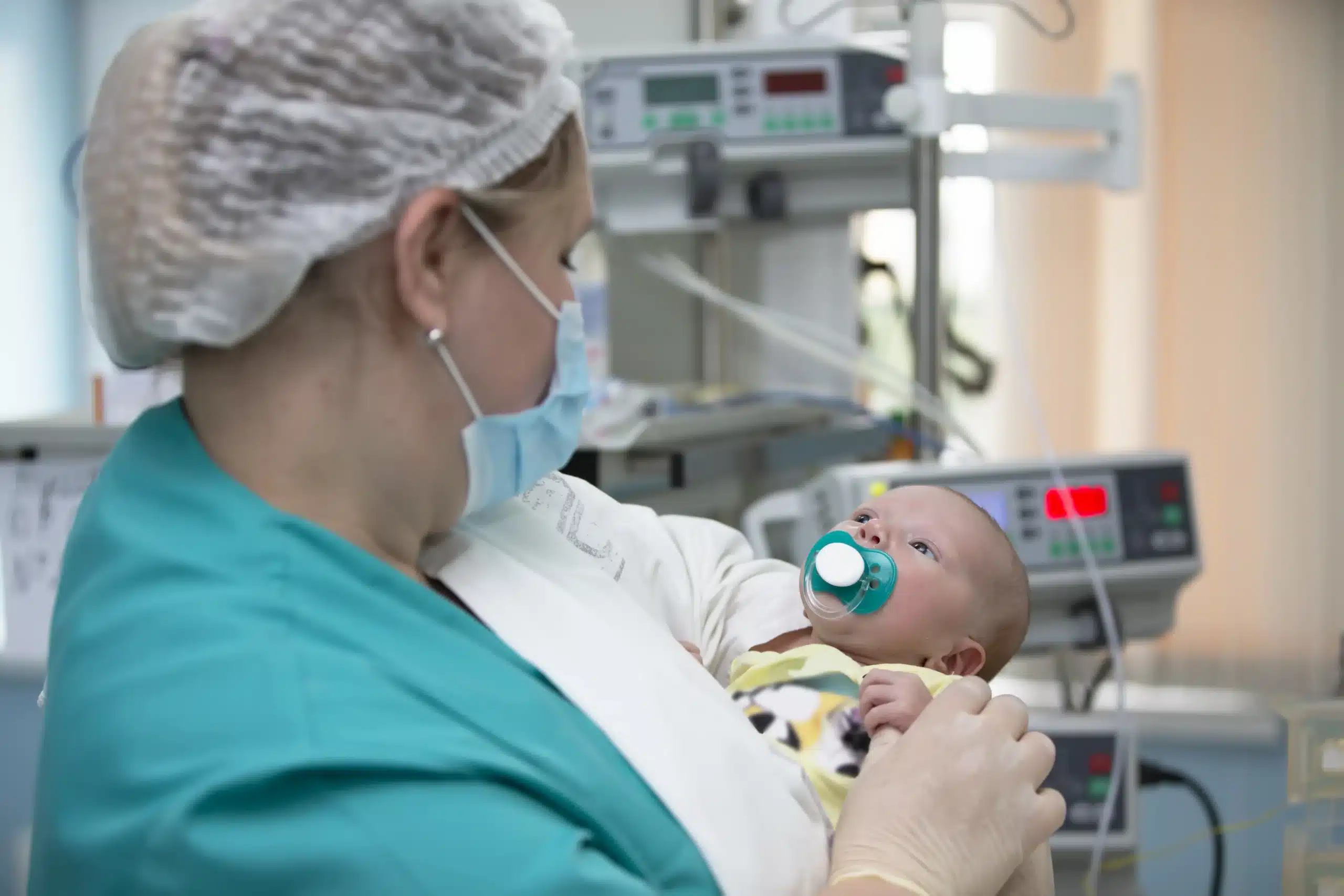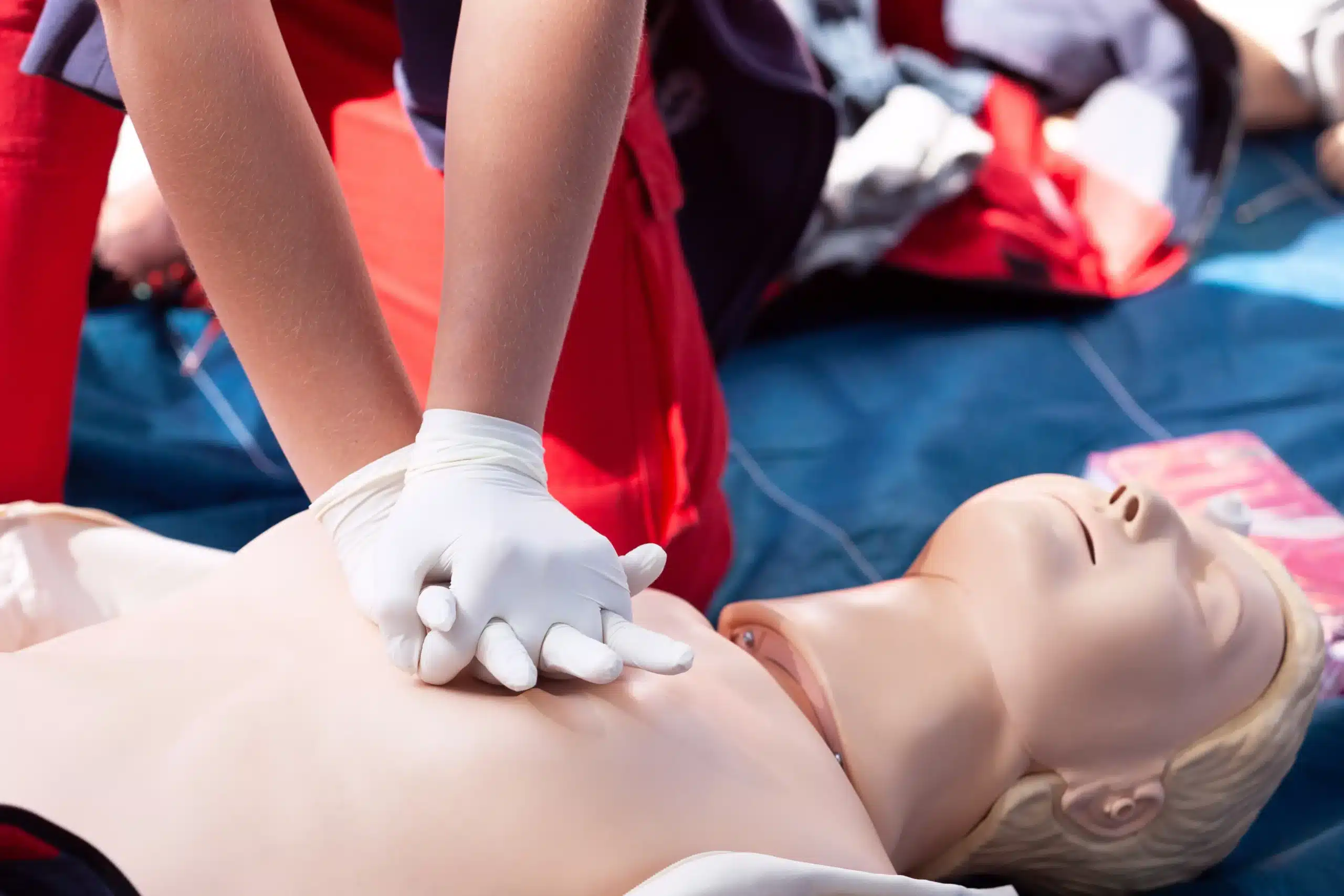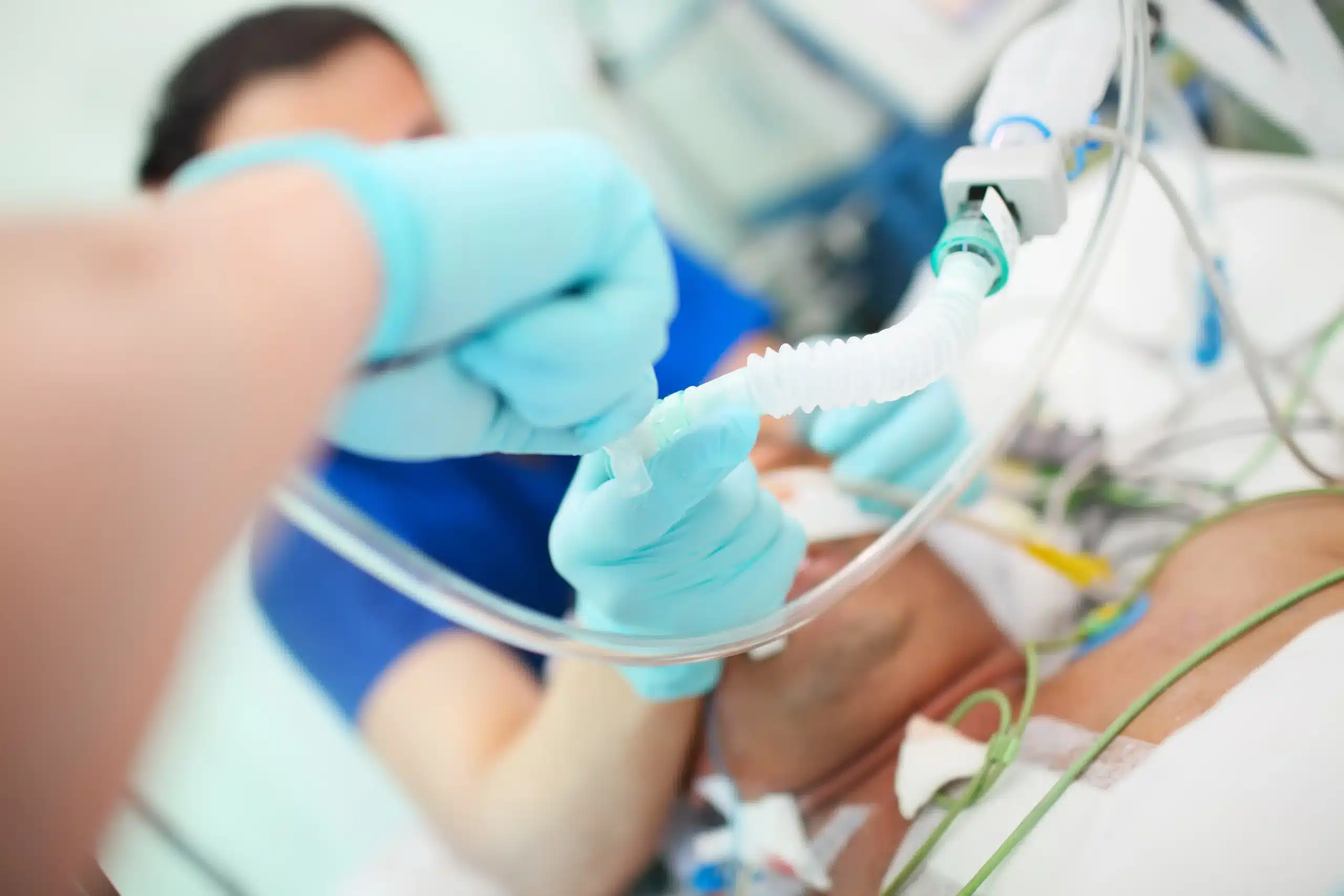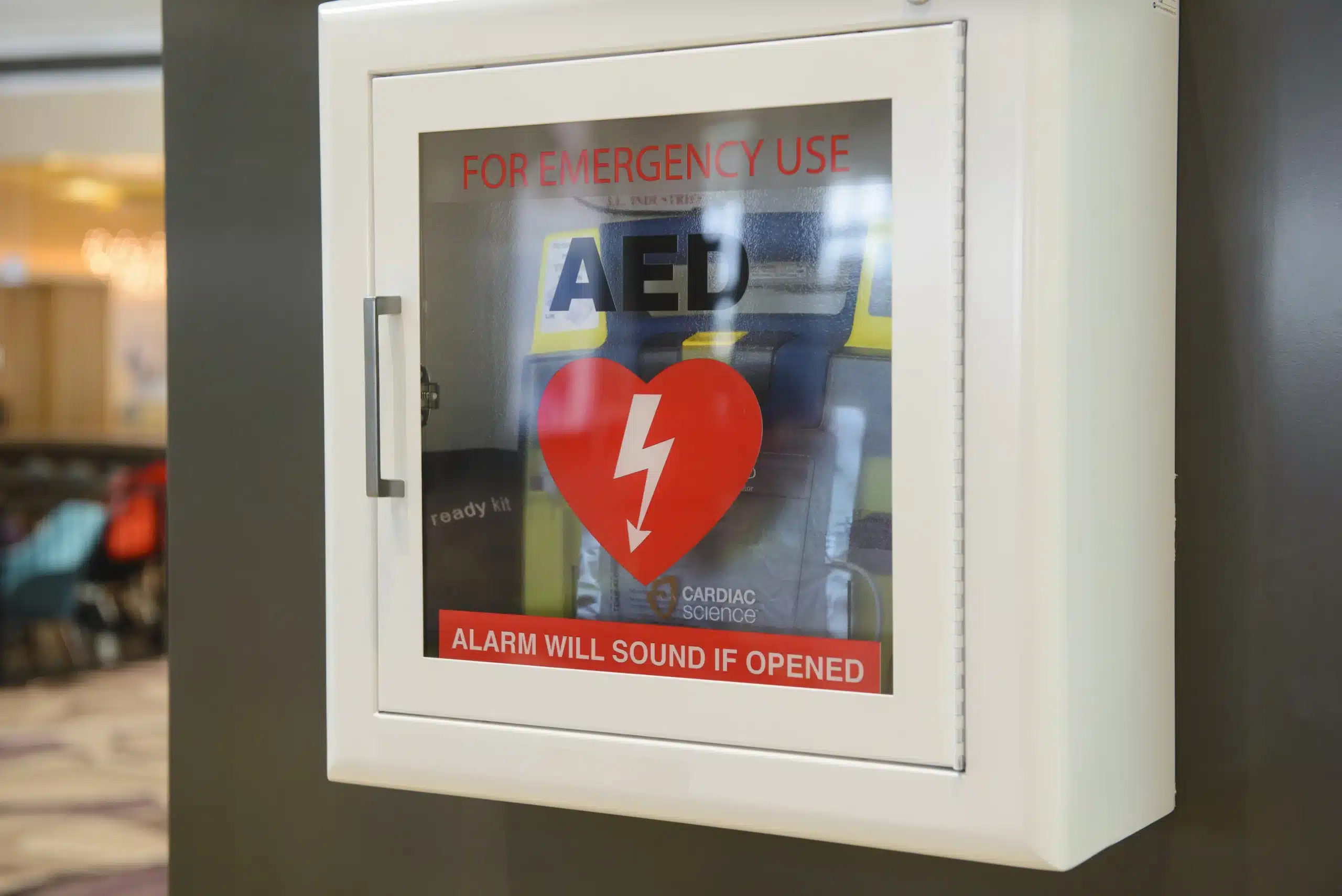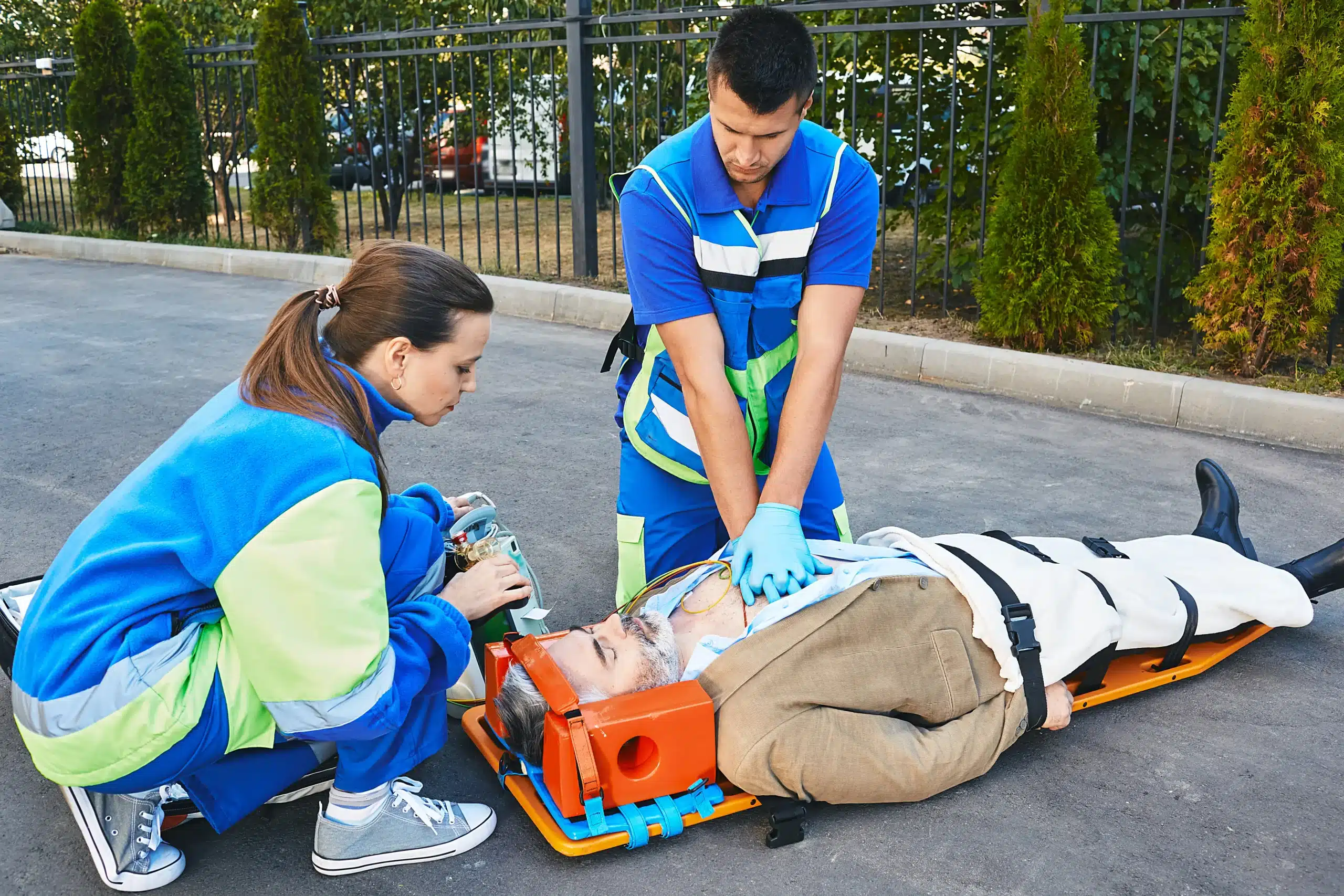Emergencies can happen anytime, anywhere. Being equipped with Basic Life Support (BLS) skills can empower you to provide immediate care and potentially save a life. This comprehensive guide will walk you through the essentials of BLS, including how to find “bls training near me.” We’ll delve into the specific skills covered in BLS courses, the advantages of certification, and how to choose the right training provider for your needs. We’ll also address common misconceptions about BLS and offer practical tips for preparing for your class and maintaining your certification. Whether you’re a healthcare professional or simply someone who wants to be prepared for anything, this guide will provide you with the knowledge and confidence to act quickly and effectively in a crisis.
Key Takeaways
- BLS skills empower you in emergencies: From recognizing a crisis to performing CPR and using an AED, BLS training equips you to provide crucial care until professional help arrives.
- Find the right BLS course for you: Explore options like in-person classes for hands-on learning or online courses for flexible scheduling. Consider factors like cost, provider reputation, and instructor qualifications.
- Stay current with your BLS certification: Renew your certification every two years and look for opportunities to refresh your skills and knowledge. This ensures you’re always prepared to respond effectively.
What is BLS Training & Why Do You Need It?
Basic Life Support (BLS) training gives you the skills to respond to life-threatening emergencies. It’s essential for healthcare providers and anyone who wants to be prepared to help in a crisis. BLS certification focuses on providing immediate care until advanced medical personnel arrive. This often involves recognizing emergencies, performing CPR, using an AED, and relieving obstructed airways. Knowing BLS can make a real difference in the critical moments before professional help arrives.
BLS Skills Explained
BLS certification goes beyond basic CPR. It equips healthcare professionals with the skills to manage airways, use an automated external defibrillator (AED), and work effectively in a team during emergencies. You’ll learn how to assess a patient’s condition quickly, deliver chest compressions and rescue breaths, and use an AED to restore a normal heart rhythm. BLS also emphasizes the importance of teamwork and communication in high-pressure situations, ensuring coordinated and efficient responses during medical crises. These skills are crucial for providing immediate care and increasing the chances of survival. You can find more information on our BLS certification page.
Benefits of BLS Training
BLS training equips healthcare providers with the knowledge and skills to follow established algorithms effectively, ensuring the best possible outcome for the patient. Having more people in the community trained in BLS means more people are prepared to help during emergencies. It also instills confidence and reduces hesitation in responding to crises. This training can be invaluable in various settings, from hospitals and clinics to schools and homes. For a deeper look into the advantages of BLS training, check out this helpful article on the benefits of BLS training courses.
Common BLS Myths
One common misconception is that BLS is only for healthcare professionals. While it’s certainly a requirement for many medical roles, anyone can benefit from BLS training. Another myth is that BLS is only for adults. BLS training often includes specialized techniques for infants, children, and adults, ensuring that responders provide appropriate care for individuals of all ages. Finally, some people believe online BLS training isn’t as effective as in-person classes. While in-person training offers hands-on practice, many reputable online programs provide comprehensive instruction and simulations that effectively prepare students for real-life scenarios. Learn more about our CPR and First Aid Certification courses.
Find BLS Training Near You
So, you’re ready to get your BLS certification—great! Now, where do you actually find these courses? Here’s a breakdown of how to find BLS training near you:
Search Online for BLS Classes
Start with a simple online search. Type “BLS classes near me” or “BLS certification [your city]” into your favorite search engine. This will give you a good starting point and show you some potential training providers in your area. You can also search directly on sites like the American Red Cross to see what courses they offer in your region.
Check Local Hospitals & Community Centers
Hospitals and community centers frequently host BLS training courses. Check their websites or give them a call to see what’s available. These classes are often convenient and taught by experienced professionals.
Compare Training Formats (In-Person, Online, Hybrid)
BLS courses come in different formats. In-person classes offer hands-on learning and direct interaction with instructors. Online courses like HeartCode BLS provide flexibility for those with busy schedules, often combining online coursework with an in-person skills check-off session. Hybrid courses blend online learning with some in-person components, offering a balance between flexibility and hands-on practice. Consider which format best suits your learning style and availability.
Recommended BLS Training Providers
Finding the right provider is key to a positive learning experience. Here are a few reputable options:
Safety Training Seminars (San Mateo)
If you’re in the San Mateo, Daly City, or Millbrae area, Safety Training Seminars offers various AHA-certified courses, including BLS. They’re known for their excellent customer service and low price guarantee.
American Heart Association
The American Heart Association (AHA) sets the standards for CPR and BLS. Checking their website for courses and resources is a must.
American Red Cross
The American Red Cross is another well-respected provider of BLS training. They offer courses across the country, making it easy to find one near you.
National CPR Foundation
The National CPR Foundation provides a variety of CPR and first aid certification courses, including BLS.
ProTrainings
ProTrainings offers a range of online training courses, including BLS, designed to be flexible and convenient.
Choose the Right BLS Provider
Finding the right BLS training provider is crucial for a positive and effective learning experience. Here’s what to consider:
Cost, Discounts & Payment Options
BLS course fees can vary. Look for providers like Safety Training Seminars that offer a low-price guarantee. Some training centers provide discounts for military personnel and students. Inquire about payment plans if needed.
Course Length & Certification Validity
Consider your schedule and learning style when choosing a course length. BLS courses typically range from a few hours to a full day. Online providers offer self-paced learning, while in-person classes provide a more structured environment. Confirm the certification’s validity period, which is generally two years.
Provider Reputation & Accreditation
Choose a reputable provider accredited by a recognized organization like the American Heart Association (AHA). Safety Training Seminars, for example, offers AHA-certified courses. The AHA provides guidelines and training materials for BLS courses, ensuring a high standard of training.
Instructor Qualifications & Experience
Instructors should have current certifications and extensive experience in healthcare. Check if the curriculum is based on the latest medical information and techniques, often reviewed by scientific advisory councils. This ensures you’re learning the most up-to-date practices.
Check Reviews & Testimonials
Before enrolling, read reviews from past students. Look for comments about the quality of instruction, course materials, and overall learning experience. Positive feedback about hands-on training and small group sizes can indicate a provider’s commitment to personalized instruction. Also, confirm that the certification is widely accepted by employers and organizations.
Prepare for Your BLS Class
So, you’ve signed up for your BLS class—congratulations! Now, let’s make sure you’re totally prepared to make the most of your training. This section covers everything from what to expect during class to helpful resources that can give you a head start.
What Happens During BLS Training?
BLS certification goes beyond basic CPR. It equips healthcare professionals with the skills to manage airways, use an AED, and work effectively in a team during emergencies. You’ll learn how to recognize the signs of someone experiencing cardiac arrest or respiratory distress and practice providing high-quality chest compressions, rescue breaths, and other life-saving interventions. BLS training also emphasizes the importance of teamwork and communication in emergency situations. You can expect a combination of lectures, demonstrations, and hands-on practice.
What to Bring to Class
Some training centers require students to bring a current American Heart Association (AHA) BLS student handbook. Check with your chosen provider—like Safety Training Seminars—to see if this applies to your class. If so, you can usually purchase the handbook directly from them. Comfortable clothing is also a must, as you’ll be actively participating in practice scenarios. A notebook and pen can be helpful for taking notes, though most courses provide key takeaways in a handout or online.
Tips for Passing Your BLS Course
The best way to pass your BLS course is to come prepared and ready to learn. Review any pre-course materials provided by your instructor. This might include videos, online modules, or readings from your student handbook. Don’t be afraid to ask questions! Clarifying any doubts or uncertainties early on will help you absorb the information more effectively. Active participation in practice scenarios is key. The more you practice, the more confident and competent you’ll become in performing BLS skills. Finally, remember that BLS emphasizes teamwork. Pay attention to the dynamics of working in a team and how to communicate effectively during a medical emergency. Studies show that addressing the concerns of healthcare workers and offering repeated training programs can improve attitudes toward CPR performance (PubMed). Improving attitudes toward AED use is also a focus of some studies (BMC Health Services Research).
Additional Prep Resources
Want to get a head start on your BLS training? Several online resources can help familiarize you with the core concepts. Online BLS training courses offer a flexible and convenient option for healthcare professionals or anyone seeking BLS certification. HeartCode BLS provides a blended learning approach that combines online coursework with a hands-on skills session. This allows you to learn the cognitive material at your own pace before practicing the skills in person. You can also find helpful resources on websites like the American Heart Association. These resources can supplement your in-person training and reinforce the skills you’ll learn in class.
Get the Most Out of Your BLS Certification
So, you’ve completed your BLS training—congrats! Now, let’s talk about making the most of your new certification. This section covers everything from receiving your certification card to keeping your skills sharp and exploring further development.
Certification Process & Documentation
After successfully completing your BLS course, including the written and practical exams, you’ll receive your BLS provider card. This card is proof of your training and qualifications. Keep it in a safe place and make a copy for your records. BLS certification goes beyond basic CPR: It equips healthcare professionals with the skills to manage airways, use an AED, and work effectively in a team during emergencies. Resources like this blog post on BLS for healthcare providers can offer further insights. Make sure you understand the scope of your BLS certification and how it applies to your professional role.
Renew Your BLS Certification
BLS certification is typically valid for two years. Keep track of your expiration date and plan to renew within the recommended timeframe. Renewal courses, often streamlined for those already certified, are readily available. Don’t let your certification lapse—staying current demonstrates your commitment to providing high-quality care. Set a reminder on your phone or calendar a few months before your expiration date to give yourself plenty of time to find a renewal course.
Continuing Education Options
Many BLS courses offer continuing education (CE) credits. Check with your BLS provider to see if your course offers CE credits and how to claim them. These credits can be valuable for maintaining professional licenses or certifications and demonstrate your commitment to ongoing learning. You can find more information on BLS courses and CE credits online.
Using Your BLS Skills
Your BLS skills are valuable assets, both personally and professionally. Whether you’re a healthcare provider, a teacher, or a parent, knowing BLS can make a real difference in an emergency. Stay confident in your abilities by practicing your skills regularly. Articles like this one on the benefits of BLS training can reinforce the importance of these skills. Consider volunteering or finding opportunities to refresh your knowledge. The more comfortable you are with BLS, the more prepared you’ll be to respond effectively when it matters most.
Related Articles
- BLS Certification for Healthcare Providers in Daly City – San Mateo CPR Classes
- BLS HeartCode Daly City: Your Certification Guide – San Mateo CPR Classes
- BLS Certification in Millbrae: Your Guide – San Mateo CPR Classes
- BLS Courses in San Mateo: The Complete Guide – San Mateo CPR Classes
- BLS Courses in Daly City: Find the Right Fit – San Mateo CPR Classes
Frequently Asked Questions
What’s the difference between BLS and CPR?
CPR is a core component of BLS, but BLS encompasses a broader range of skills. Think of it this way: CPR focuses on chest compressions and rescue breaths, while BLS builds upon those skills by adding techniques like using an AED, managing airways, and working effectively within a team during a medical emergency. BLS provides a more comprehensive approach to managing life-threatening situations.
How long does BLS certification last, and how do I renew it?
BLS certification is typically valid for two years. To renew, you’ll need to take a recertification course before your current certification expires. These courses cover the same core content as the initial certification but are often shorter and designed as a refresher. Check with your original training provider or other reputable organizations like the American Heart Association or American Red Cross for recertification options.
Is online BLS training as good as in-person training?
Both online and in-person BLS training can be effective, and the best choice depends on your learning style and schedule. Online training offers flexibility, allowing you to learn at your own pace and convenience. In-person classes provide a more structured environment with direct interaction with instructors and hands-on practice. Many online programs now incorporate blended learning, combining online coursework with an in-person skills assessment to ensure competency.
Who should get BLS certified?
While BLS certification is often a requirement for healthcare professionals, anyone can benefit from learning these life-saving skills. From parents and teachers to coaches and office workers, having more people trained in BLS means more people are prepared to respond effectively in a medical emergency. It empowers individuals to act confidently and potentially save lives.
How do I find a reputable BLS training provider near me?
Start by searching online for “BLS classes near me” or checking the websites of organizations like the American Heart Association, American Red Cross, or National CPR Foundation. Look for providers that offer AHA-certified courses, experienced instructors, and positive student reviews. Don’t hesitate to contact different providers to compare course formats, costs, and schedules to find the best fit for your needs. Also, consider recommendations from friends, family, or colleagues who have taken BLS training.
